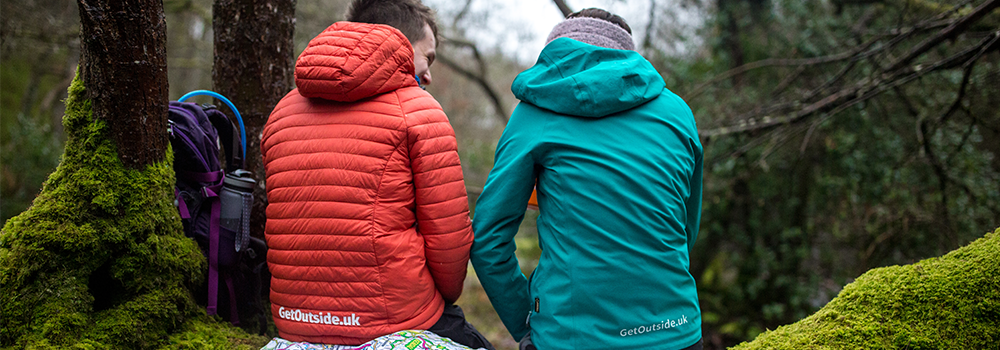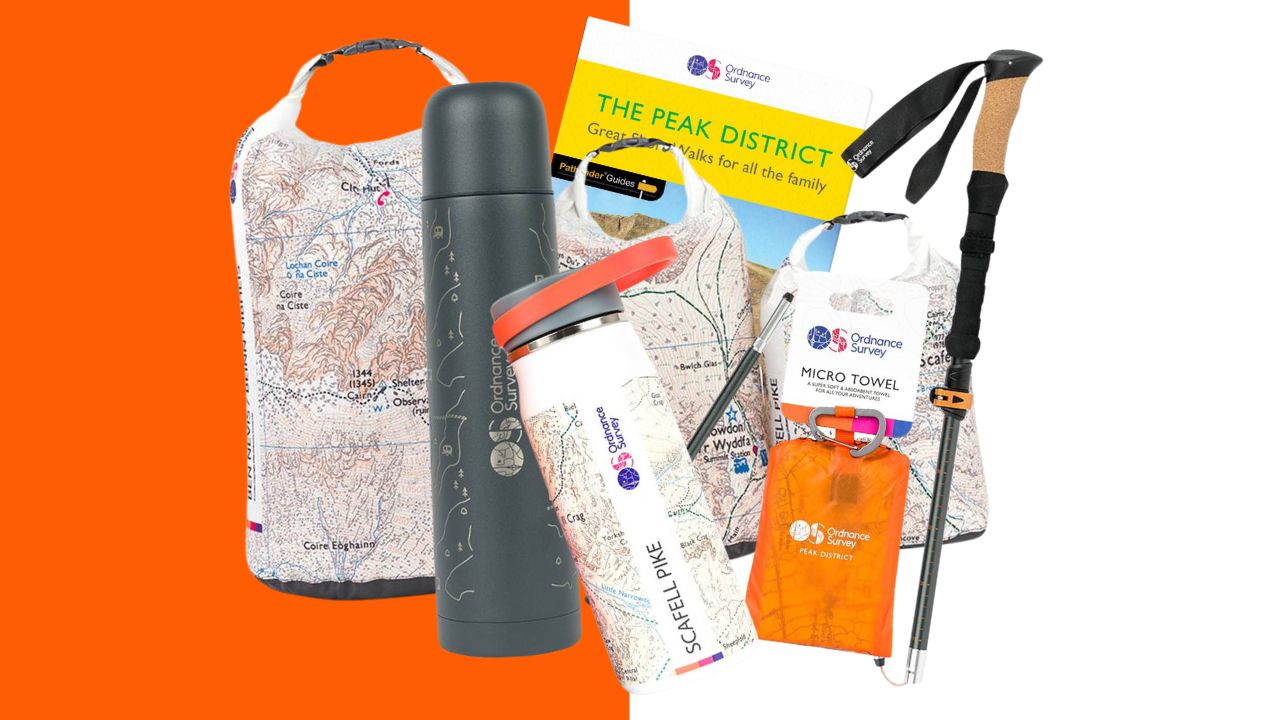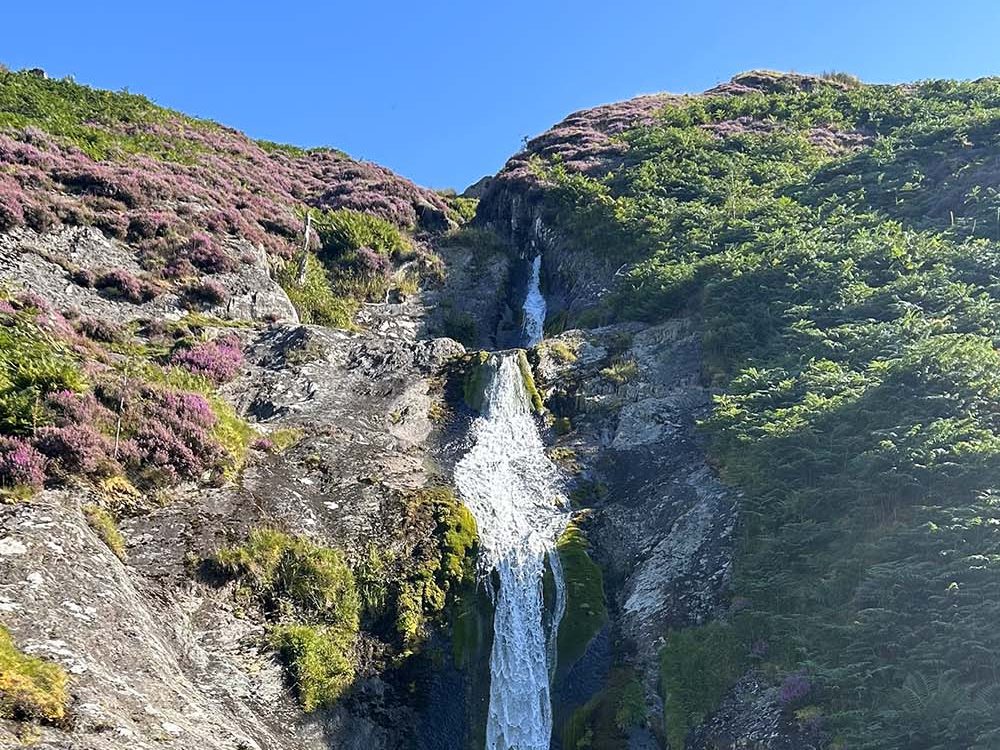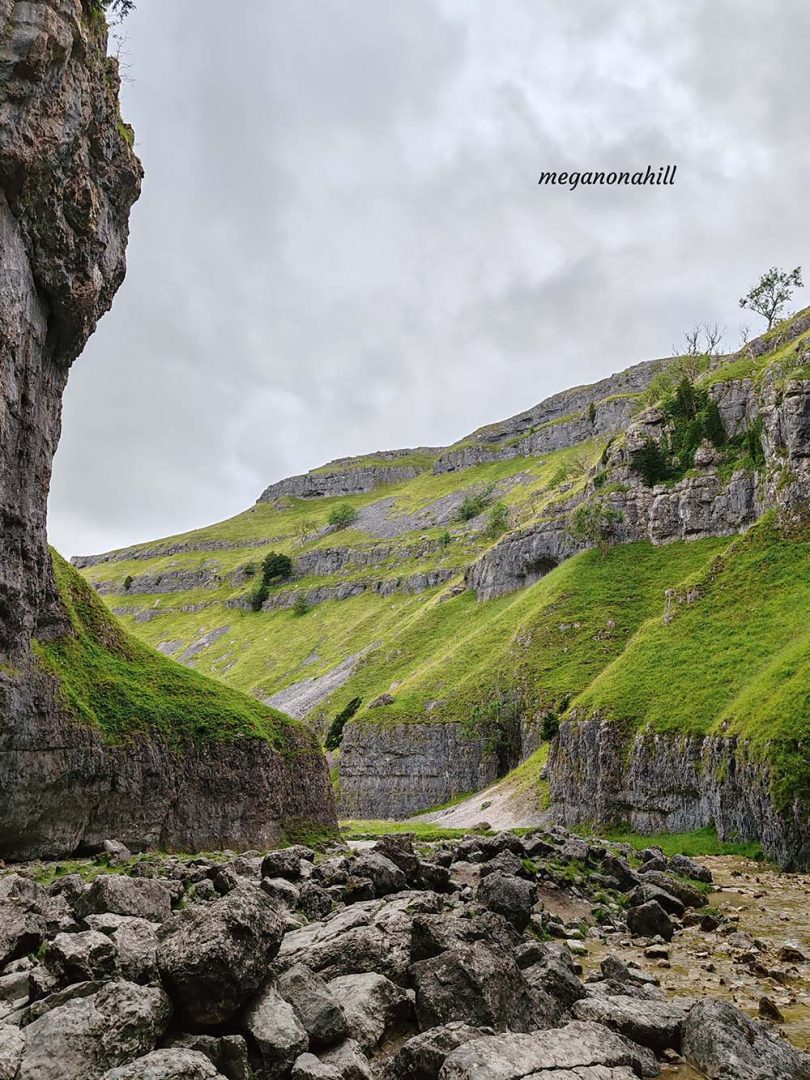Whether you’re a seasoned hill walker, a speedy trail runner or you’re new to the outdoors, this ultimate guide to layering will help you get kitted out so you can enjoy your favourite routes whatever the weather.
There’s something exhilarating about being out and about in nature during winter, even if it is blowing a gale. As the saying goes, there’s no such thing as bad weather, just bad gear, and it’s true!
Staying warm and dry is easy if you stick to the three-layer principle:
1. Waterproofs
2. Mid-layer
3. Base layer
We’re going to talk you through this essential layering system and give you some pointers on how to choose the best products for your needs. Let’s start from the outside in.
1. Waterproofs
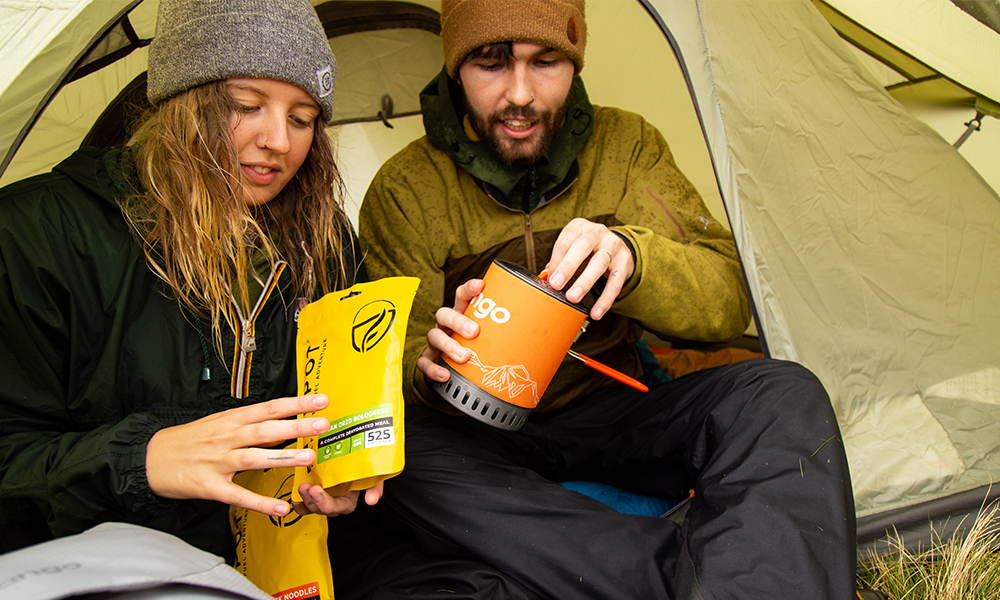
If you’re going to enjoy time outside in the rain then you’ll need to keep yourself dry. We all know what the great British weather is like and even if it isn’t raining when you set off, it could start at any time!
Waterproof ratings
Most waterproofs come with a waterproof rating and a breathability rating. There is not one standardised way of measuring these which can make it tricky to compare. Most brands display waterproof ratings in mm (hydrostatic head) and breathability ratings in g/m²/day (MVTR) or RET, so let’s concentrate on those.
All this technical jargon can seem confusing so here’s a simple way to find what’s best for you. Think about what you’ll be using your waterproofs for and look out for the following specs depending on your needs:
Waterproof ratings:
- Under 10,000mm – If you’re looking for something to keep you relatively dry on a short walk in light rain then a 6,000mm waterproof rating will do the trick. Anything lower won’t withstand more than a light shower.
- Over 20,000mm – If you’re likely to be out all day in heavy downpours, or you’re carrying a backpack, then you should consider ratings of 20,000mm and above.
Breathability ratings:
- 5,000g/m²/24hrs – Sufficient for Sunday strolls and daily urban walks.
- Over 15,000g/m²/24hrs – If you’re a keen hill walker, trail runner or have the tendency to sweat, then you may want to invest in something more breathable with a rating of 15,000 or above.
- RET – You’ll likely to come across RET ratings in products made from GORE-TEX®. The lower the rating the more breathable it is. Anything under 6 is extremely breathable, 6-12 is suitable for most outdoor activities and 13-20 will only be ok for wearing around town.
It’s important to remember that even if you invest in the best waterproofs on the market, nothing will keep you totally dry if you’re out all day in heavy rain. Fully waterproof material isn’t breathable so even if the rain is kept out, you’ll become wet on the inside from your own preparation.
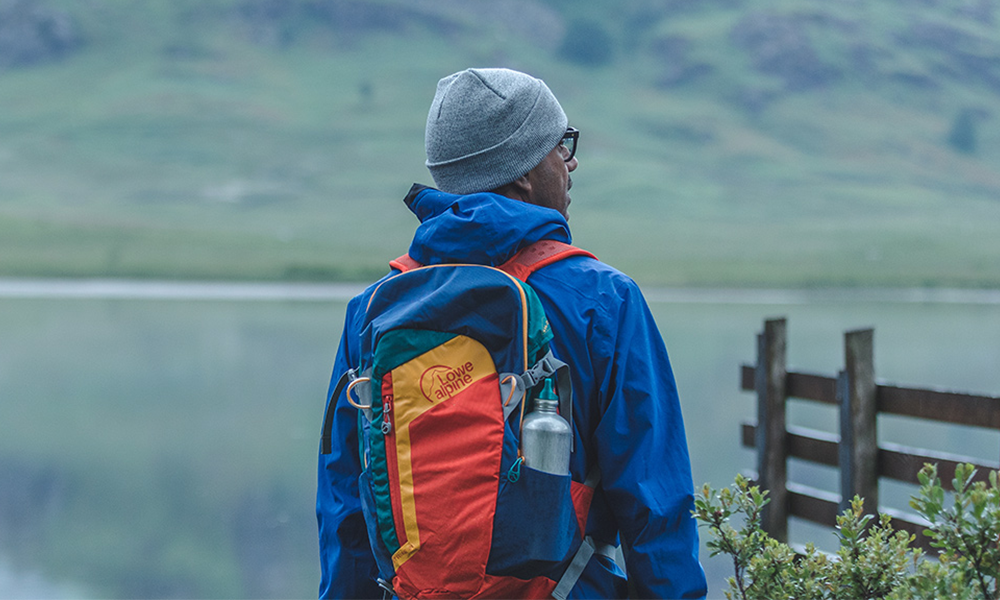
Waterproof construction
Waterproof jackets are constructed in different ways and each has their benefits. Waterproofs can be made up of 2, 2.5 or 3 layers. Just in the same way as ratings, the more layers the garment has the more waterproof and durable it is likely to be. Here’s a quick rundown of what you need to know.
- 2 layers – A 2-layer waterproof jacket will be the cheapest, most comfortable option, but these often compromise on breathability and durability.
- 2.5 layers – A 2.5-layer jacket is the sweet spot between breathability, weight, and durability if you’re regularly active outside. PERTEX® SHIELD is a great choice of material as it combines good breathability with low weight.
- 3 layers – A 3-layered jacket will offer the highest protection but it does come with a weight penalty. So, if you’re wanting to pack ultralight, a 3-layer jacket may not be for you.
GORE-TEX is a highly technical, durable material and whilst GORE-TEX® is generally warmer and easier to care for, other materials, such as e-Vent, and PERTEX® SHIELD, may still offer the same high level of waterproofing and breathability at a fraction of the cost.
Key features
Taped seams – For a jacket to be 100% waterproof it will need to have taped seams to ensure water does not seep through the stitching in heavy rain. These are great at keeping you dry but they do reduce the breathability of the product.
DWR – Most outdoor gear is treated with a Durable Water Repellent coating (DWR) which makes the water bead up on the surface and run off. This does an excellent job at repelling water but DWR does wear away after time, and you will need to re-apply it on a regular basis. This is relatively easy with a special re-treating product.
Storm flaps – Many zips have storm flaps which act as an extra barrier to wind and rain. Storm flaps are usually found on more high-end jackets.
Pit zips – These are underarm zippers that help keep you cool by allowing the release of heat and moisture while keeping you protected from the rain.
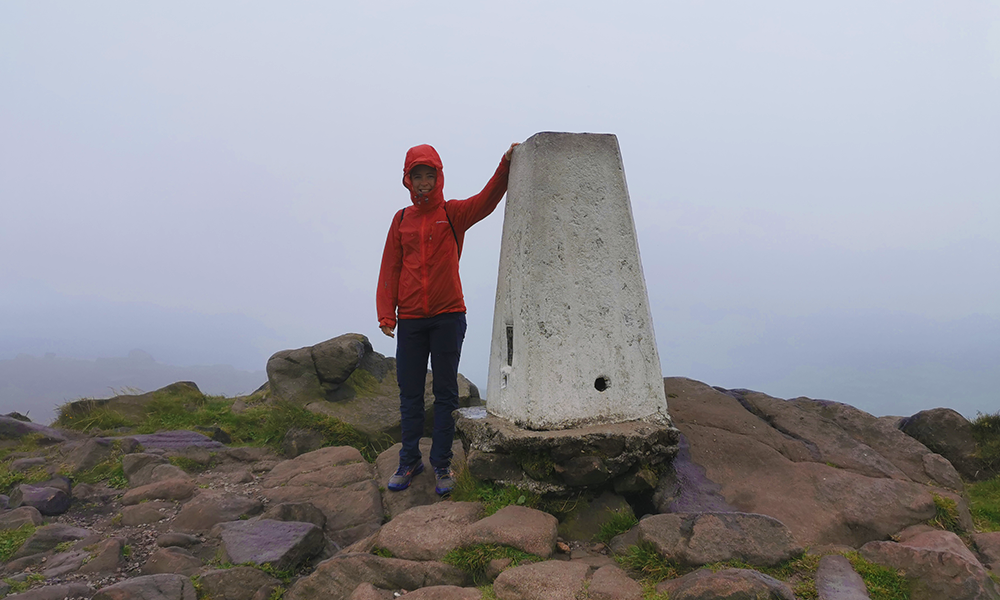
Wearing Montane Minimus waterproof jacket
Top products
Just starting out: Mac n in Sac waterproof jackets, ponchos and over trousers
These packaway waterproofs will keep you protected against the elements with fully-taped seams, water-repellent zips, a 10,000mm waterproof rating and an affordable price tag.
Frequent explorer: Alpkit Balance Waterproof Jacket
This 3-layer jacket is suitable for all outdoor activities. It has excellent waterproof and breathability ratings (20,000;20,000) plus a number of handy features to keep you comfortable all day long. The stretch material and helmet compatible hood makes this jacket especially good for cycling. As do the ‘stealth vents’ under the arms, which are designed to keep you cool when working up a sweat. It also has tapered seams so if the weather does turn bad, you won’t find any rain seeping through to your mid-layer. This jacket has everything you want to stay dry when active outdoors.
If money isn’t a factor: Art’yrx Zeta AR Jacket
This jacket is the crème de la crème of outdoor gear. It has the waterproof breathable protection of GORE-TEX® fabric with advanced GORE C-KNIT™ backer technology. Not only does it perform but it looks good too. Turning heads on the trail does come at a cost though but if money’s no object, then this is one of the best you can get.
For the fast and light: Montane Minimus Jacket
The Minimus is a firm favourite with those conscious about weight or trail runners wanting an extremely packable jacket that they can rely on. Ratings are second to none (20,000mm:20,000g) and despite its low weight, no detail is forgotten. There’s a fully adjustable roll-away hood, a handy chest pocket and an adjustable hem to prevent heat loss. This jacket is the ultimate balance of weight and performance.

Wearing Craghoppers waterproof jackets
2. Mid-layers
As well as staying dry, it’s important to keep warm when outside. This will not only keep you safe but make the day more enjoyable. Mid-layers do just that and come in many different variations suitable for all temperatures.
Tops and trousers
A cosy fleece is one of the most popular mid-layers. It’s quick-drying, high-wicking and keeps you warm when wet. A thicker merino wool jumper also makes a great mid-layer, look for a wool weight of around 260. If you’re likely to be using your mid-layer as an outer layer in more favourable conditions, or wear it for strenuous exercise, consider technical material like Polartec and one with a DWR coating. This could include a softshell jacket or a hardface fleece which has an additional protective outer. Key features include hoods and thumb loops for extra warmth and zips for ventilation.
Specific outdoor trousers for your chosen activity will keep you most comfortable. Jeans, tracksuit trousers or leggings are not advised for extended time outside. Many outdoor trousers have a DWR coating to offer a greater level of protection whilst others zip off into shorts, making them suitable for year-round activities.
Insulated jackets
For particularly chilly days a down jacket works well but make sure you have a good waterproof top layer, down doesn’t work when wet! Most high-tec down is now treated to give it a degree of protection but it’s certainly not enough to be worn for long without a waterproof later. Many people prefer padded synthetic jackets which feel very similar to down but are much more durable and still keep you warm when wet. The offset to this is that synthetic weighs more than down and may not be as warm.
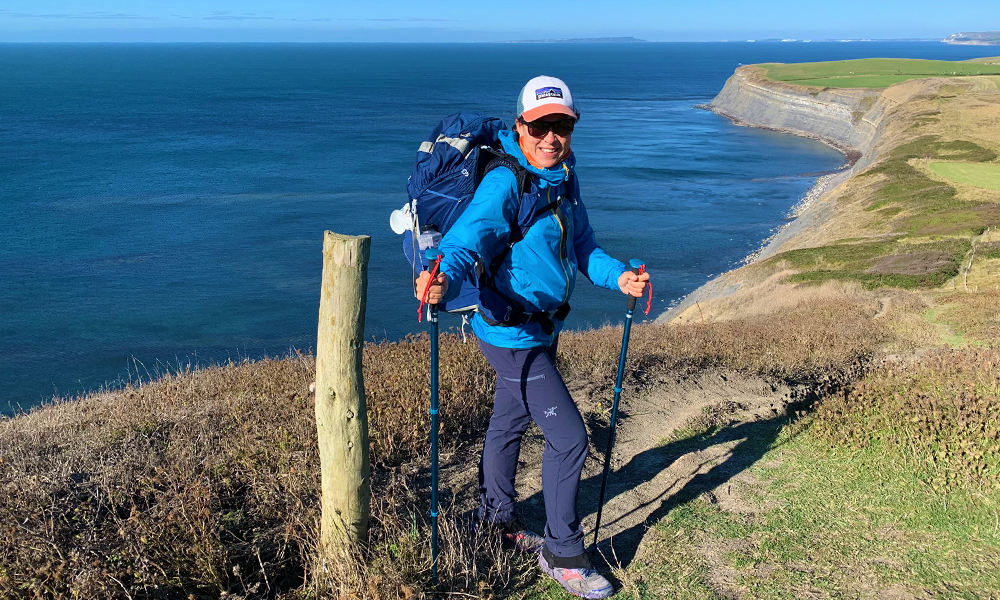
Wearing Arc’teryx Gamma LT trousers and Montane Minimus waterproof jacket
Top products
Just starting out: Mountain Warehouse Snowdon Micro Fleece
This soft touch fleece comes in over ten different colours! Its breathable, quick-drying fabric makes it good for multi-day trips and washing. It’s made from anti-pull fabric which prevents the fabric from bobbling. This is a great entry-level fleece.
Frequent explorer: Craghoppers Men’s Corey VI Half Zip
This lightweight microfleece is guaranteed to keep you warm all year round. Like many Craghoppers products, it’s made from recycled materials – 14 plastic bottles in fact! A good value fleece available in several colours to suit everyone’s taste.
If money isn’t a factor: Sweaty Betty Mountain Wool Merino Jumper
You just need to feel this jumper to fall in love. It’s made from 70% merino wool meaning it will keep you warm when you need it the most. Merino is really good at regulating your body temperature so if you do warm up, it won’t become uncomfortable. This is a great jumper if you’re wanting to venture out in style but don’t want the bulk. It’s the perfect mix of fashion and performance.
For the fast and light: Patagonia Micro Puff
The Micro Puff is one of the lightest padded jackets on the market. It’s extremely packable with the pocket doubling up as a stuff sack. It’s made from a PlumaFill synthetic insulation, which is an impressive featherlight alternative to down. The protective Pertex® Quantum shell is water-resistant, windproof and treated with a DWR finish – another key feature to look out for! This jacket is perfect for small packs and multi-day hikes when you’re wanting to keep weight to a minimum.
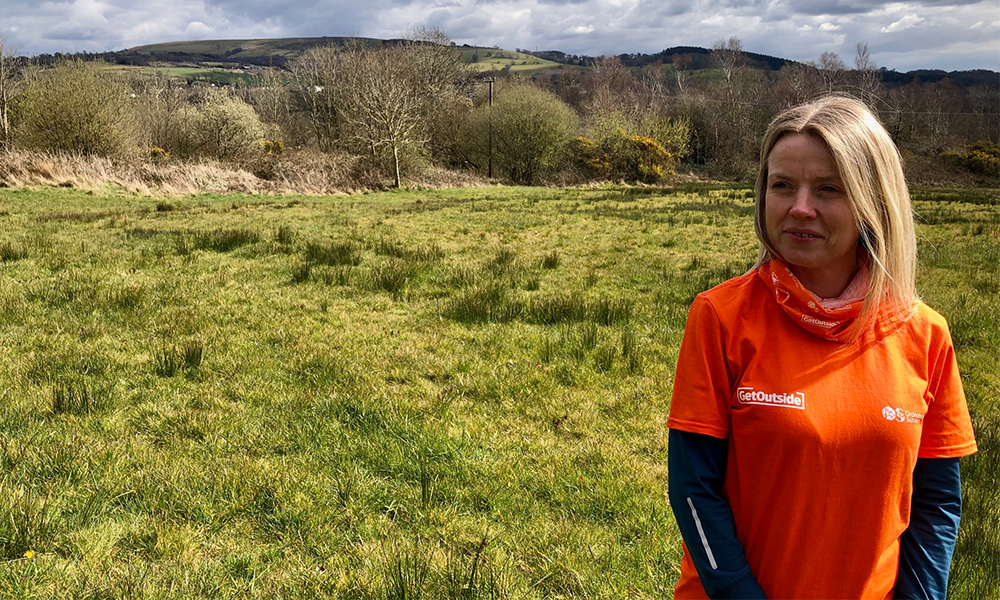
OS GetOutside Champion Rebecca Lees in her base layer
3. Base layers
A high wicking, quick drying base layer is a good place to start. This should fit reasonably tight to your skin to ensure maximum warmth.
Merino
Merino wool is great at regulating your body temperature and keeping you odour-free. This is especially useful in changing conditions and on extended trips where you may not have access to a washing machine. In the same way it works on merino sheep, a base layer made from merino will keep you warm when you’re cold and cool when you’re hot. Merino is hard to beat when it comes to warmth, breathability, odour control, and sustainability.
Synthetics
Synthetics base layers are generally cheaper and can have better wicking properties, but they do less for the smell! Made-made materials also excel on the durability front. If you’re bashing through shrub in only your base layer, then merino wool can have the tendency to pull whilst a synthetic base layer will stand up to more. When shopping for a synthetic base layer look out for Polartec, a high-performance, high-wicking material.
Avoid cotton, including denim, as once gets wet it loses its ability to insulate. For really chilly days, a long-sleeved top and tights are best.
Top products
Just starting out: Decathlon Essential Cycling Long-Sleeved Base Layer
There are not many base layers under a tenner which will keep you as warm as this. It has an effective moisture management which makes it good for cycle rides and long walks. Decathlon earn brownie points by making this base layer 25% more eco-friendly than the previous model.
Frequent explorer: AlpKit Kepler Leggings
These merino leggings are great for wearing under waterproof trousers, mid-layer trousers and around the campsite. The superfine merino material has an excellent warmth to weight ratio and, as an ‘active fibre’, responds to temperature changes to keep you warm in the cold and cool when you’re working hard.They’ve been core-spun with nylon which makes them more durable for regular use and longer trips.
If money isn’t a factor: Acai Merino Wool Crew Neck T-Shirt
This performance t-shirt is designed specifically for women and has a flattering fit. It’s rich in technical features due to the natural benefits of wool, making it moisture-wicking, temperature regulating and hypoallergenic – perfect for long hot days on the trail. It’s environmentally friendly too, made from 87% natural fibres from a combination of Merino Wool, which is biodegradable and Lyocell, a fabric derived from regenerated wood pulp.
For the fast and light: RAB Pulse LS Zip Top
The Pulse LS is a versatile technical base layer, ideal for multi-day climbing and hiking trips. It’s lightweight Motiv™ fabric weighs next to nothing and boasts 30+UPF for valuable sun protection. If you’re often active, you’ll love the wicking properties of the Polygiene® Stays Fresh Technology. This base layer won’t keep you as warm as merino but it’s perfect for more intensive activities.
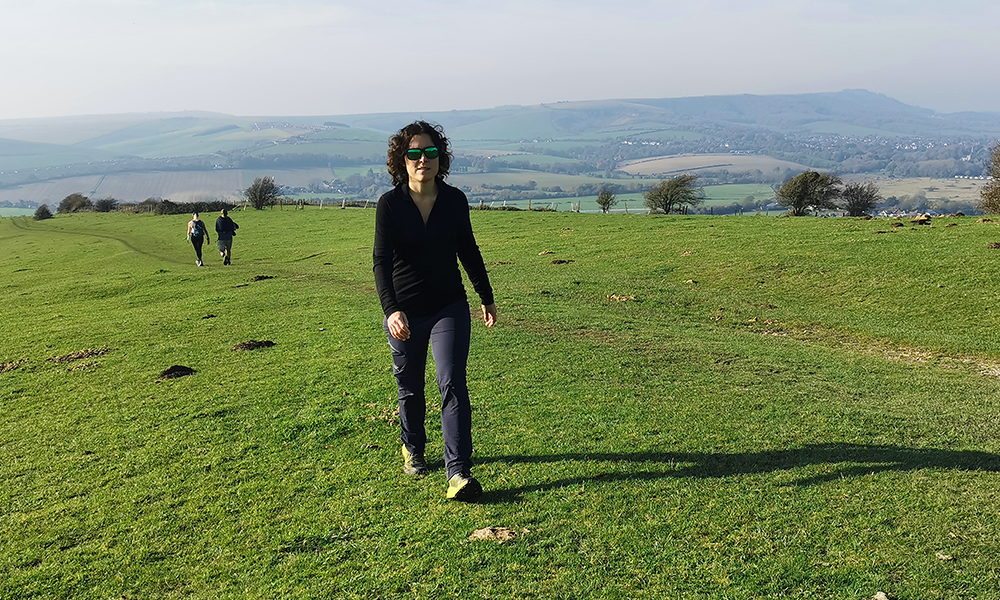
Wearing Ice Breaker Merino 200 Oasis base layer and Arc’teryx Gamma LT trousers
The game changers
Along with an adequate laying system there are some important accessories which will make a big difference when it comes to keeping you snug. A woolly beanie hat, buff, gloves, and some warm merino socks will go along way for very little weight. Make sure they accompany you on every winter walk!
If venturing out in not-so-favourable weather, it’s also wise to keep your belongings in a dry bag, take a emergency thermal blanket with you ,and don’t forget to pack your map! If you’re just heading out to the shops, a coat and a brolly will be sufficient enough to keep you dry.
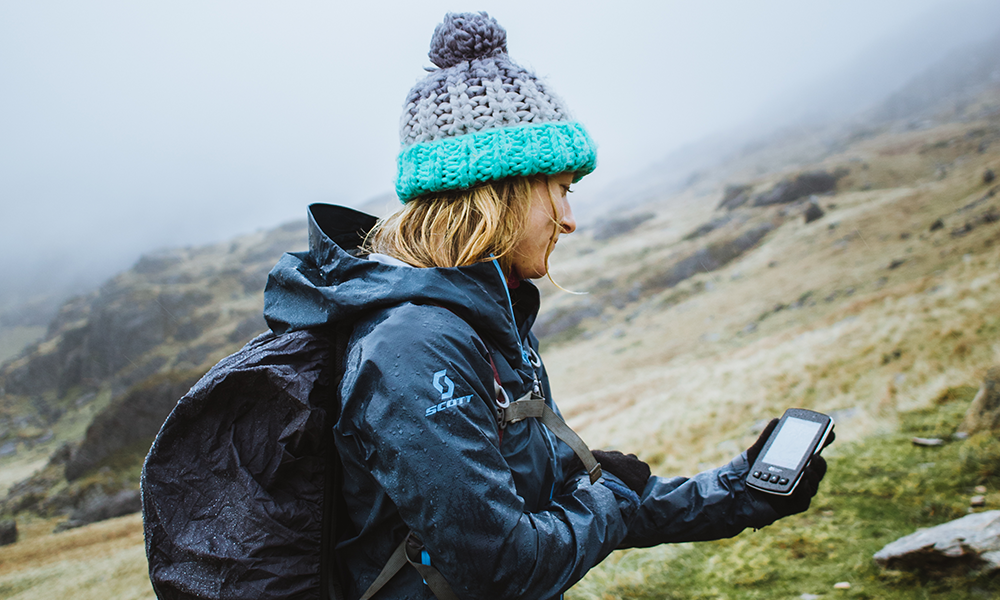
A woolly hat and gloves are essential in cold weather
The cold and the rain really shouldn’t put you off getting outside, it just adds to the adventure! It’s often the days out where we hadn’t initially felt like braving the elements, that are often the most rewarding and memorable!
